Overview
In this design case overview, I will guide you through a project where I led the effort to assess the maturity of a design cross-functional team, identify growth opportunities, implement targeted improvements, and set clear OKRs that guided the team's efforts toward increased collaboration, communication, and overall success for upcoming quarters.
Users and stakeholders
- Design team
- Leadership team
Roles and responsibilities
Design Operations Manager: identify opportunities to foster team growth and company goals alignment.
Problem statement
To align our team with our company goals and address our lack of a structured decision-making process for prioritizing improvement opportunities, I saw an opportunity to assess our current team maturity. This assessment allowed us to identify areas for improvement and establish clear objectives for the upcoming quarters, ensuring a focused and strategic approach to our team's development.
Scope and constraints
One challenge was addressing the potential reluctance of team members to provide honest feedback. To address this, I implemented an anonymous survey format, assuring respondents that their responses would be confidential.
Getting things done
Survey structure
Considering the NNGroup Design Ops Menu, I've structured a survey considering the design operations pillars to structure a survey, aiming to gather the perspective of our team members about the topics of each front:
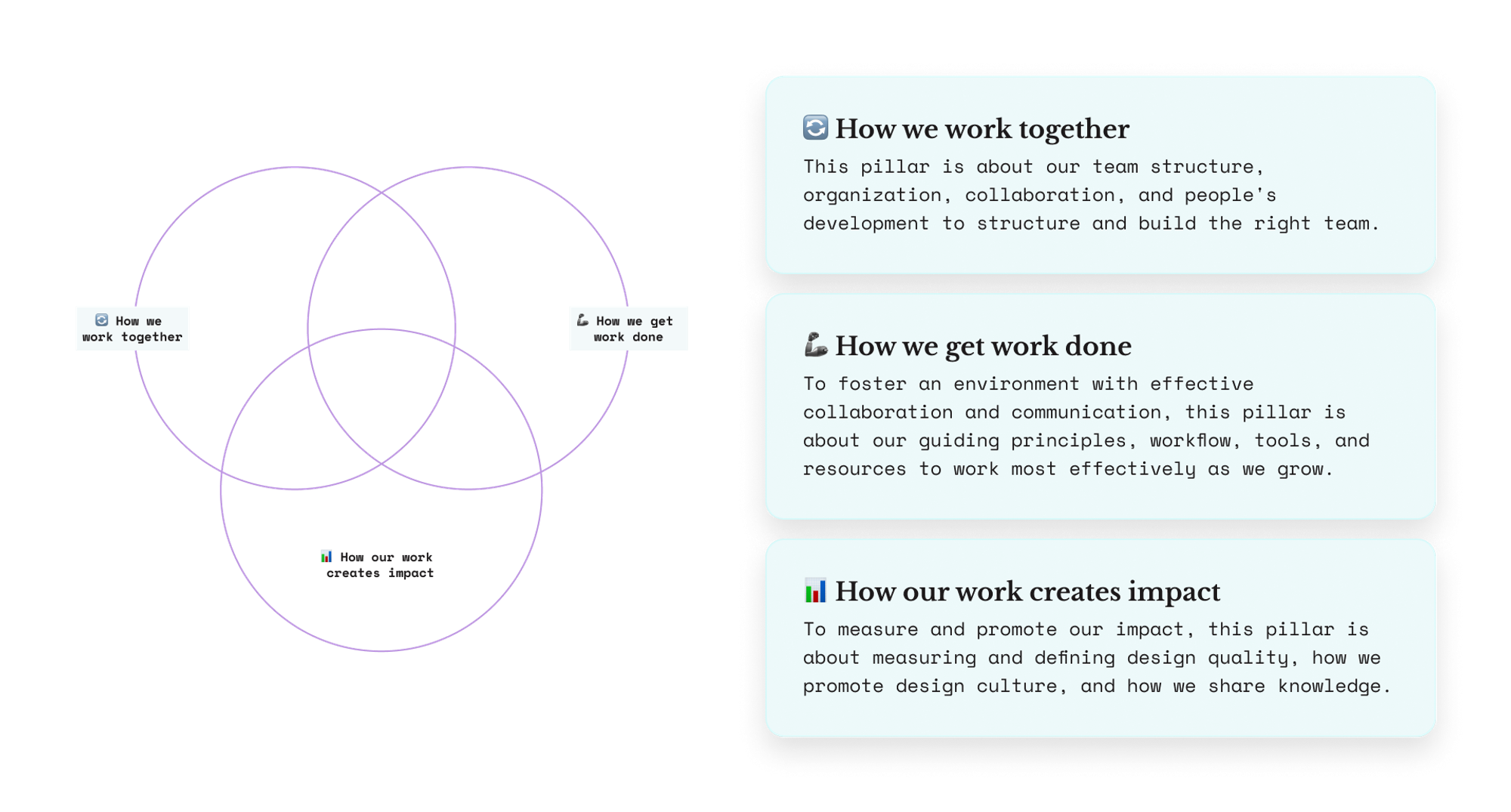
Implementation
The survey structure was presented to the leadership and the team, to gather feedback and perceptions about the proposal. After the alignment, we were able to run our first assessment.
Analysis
After gathering survey responses, I analyzed the data to identify patterns and trends. The insights revealed areas where the team was excelling and highlighted opportunities for improvement, we've grouped the results into three tiers:

These insights directly informed the design of solutions to address communication gaps, role ambiguities, and process inefficiencies.
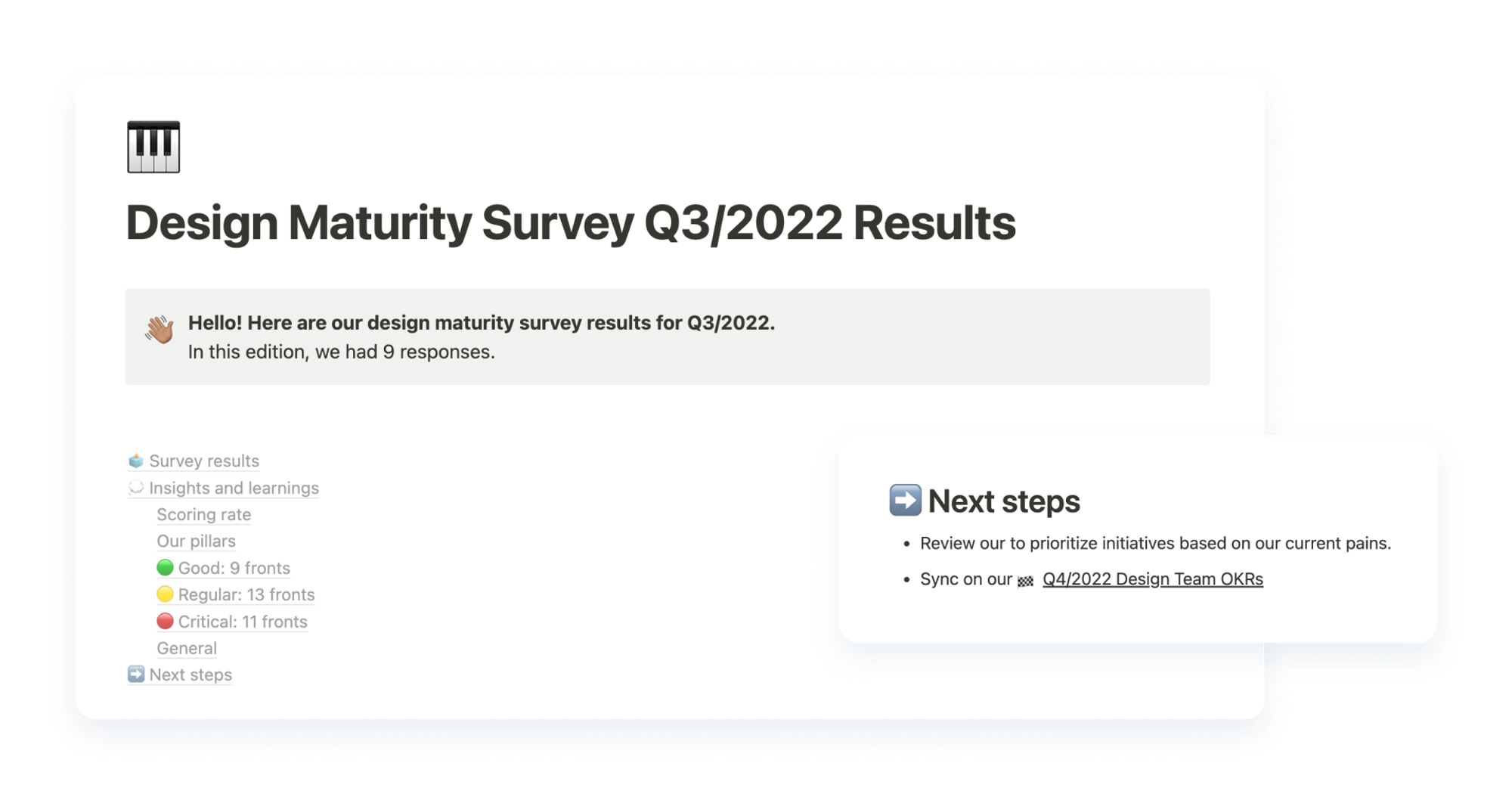
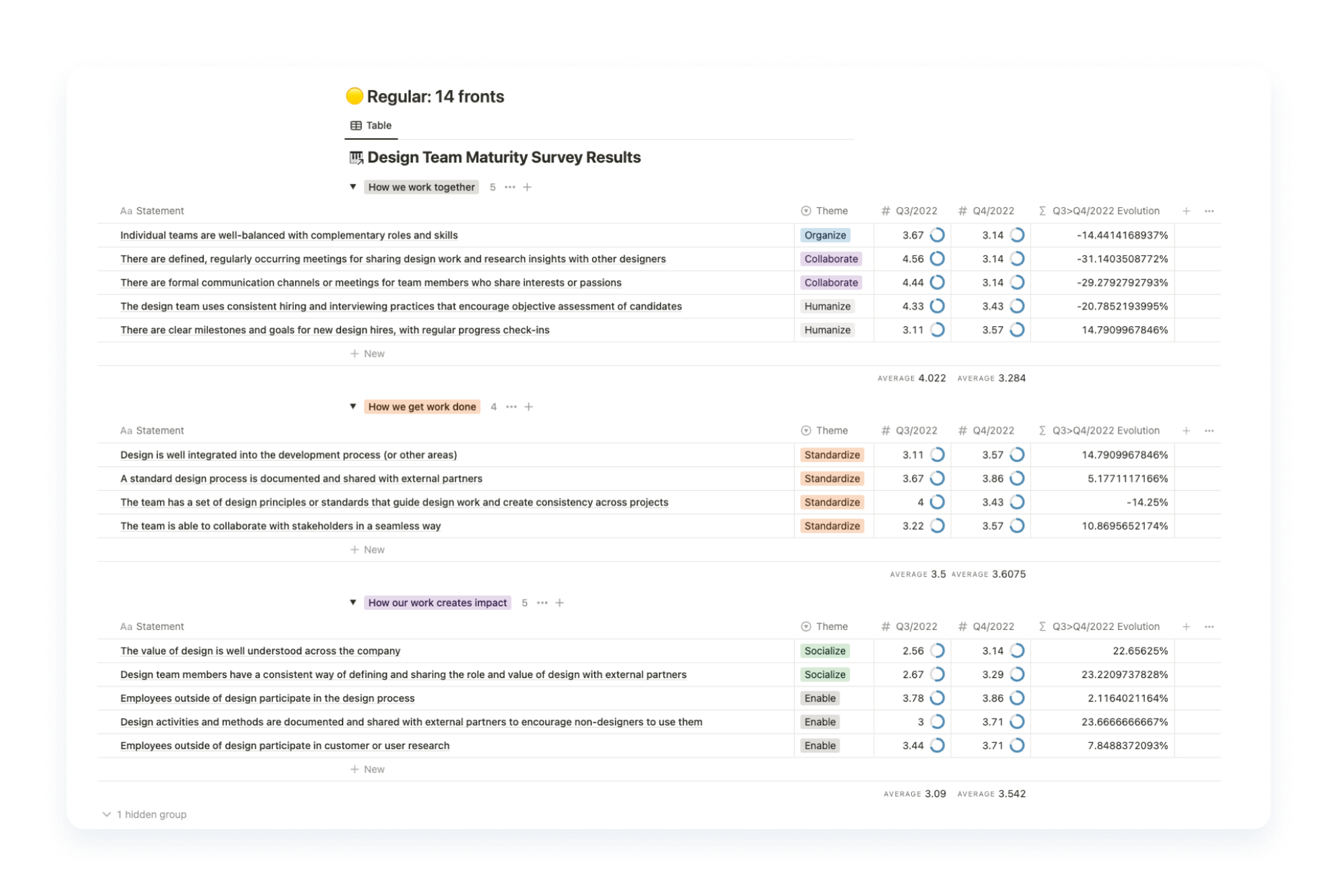
Communication and alignment
After presenting to the team, we were able to identify our opportunity areas and propose OKRs that would improve the identified fronts.
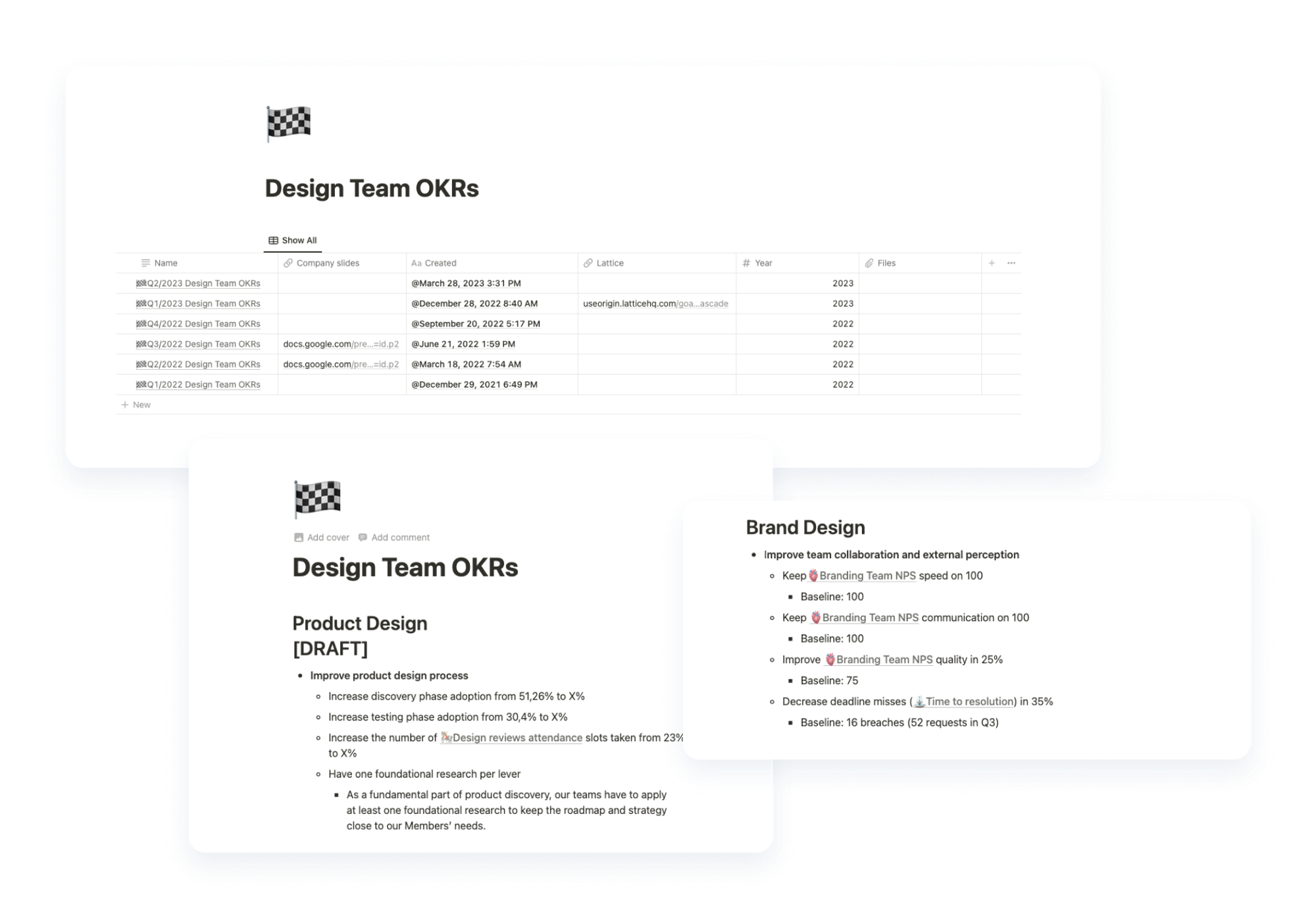
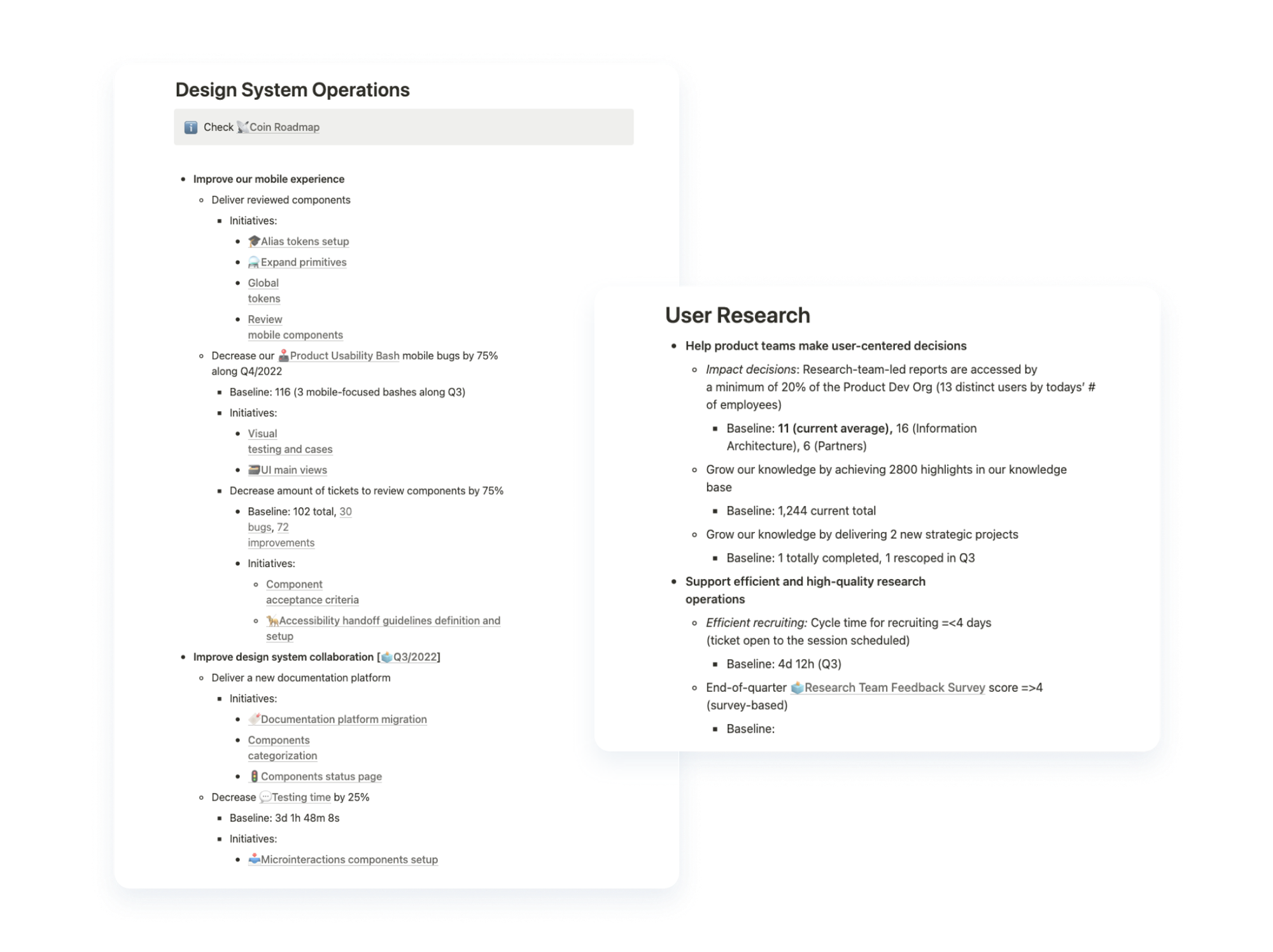
Outcomes and results
Goals achieved
- Set up a baseline to assess our team opportunity areas.
- Understand our real gaps as a team and be able to propose improvements.
- Start proposing initiatives to improve team areas aligned with our company goals.
Lessons learned
- Importance of alignment and communication with the team.
- Importance of having data to drive improvements.
- The need for ongoing communication and alignment to drive progress.
- The significance of setting clear and measurable OKRs for guiding team efforts.